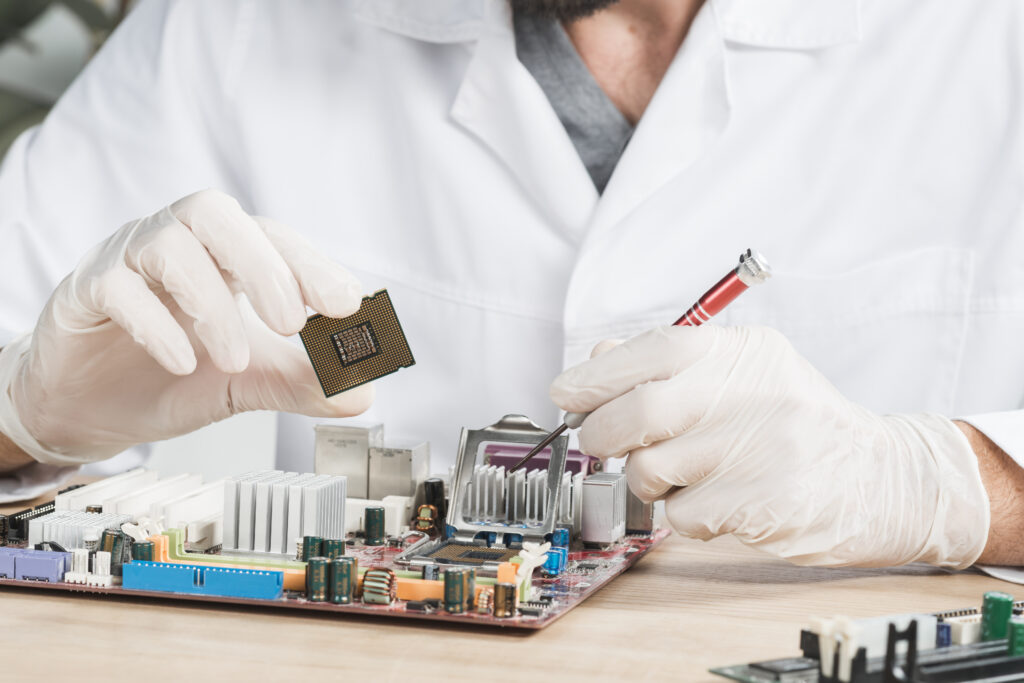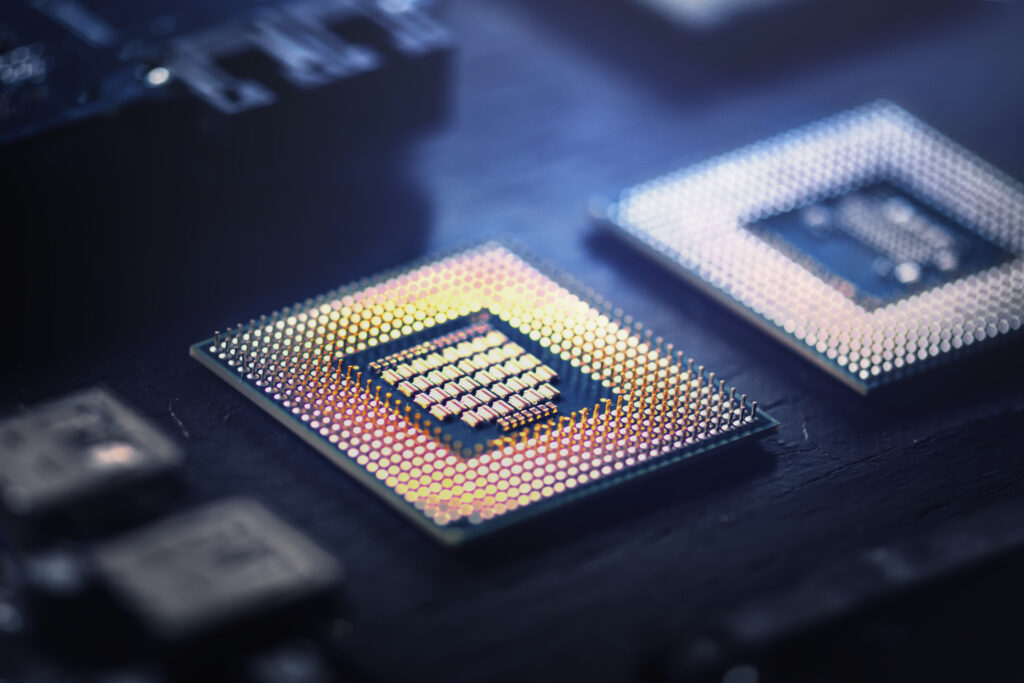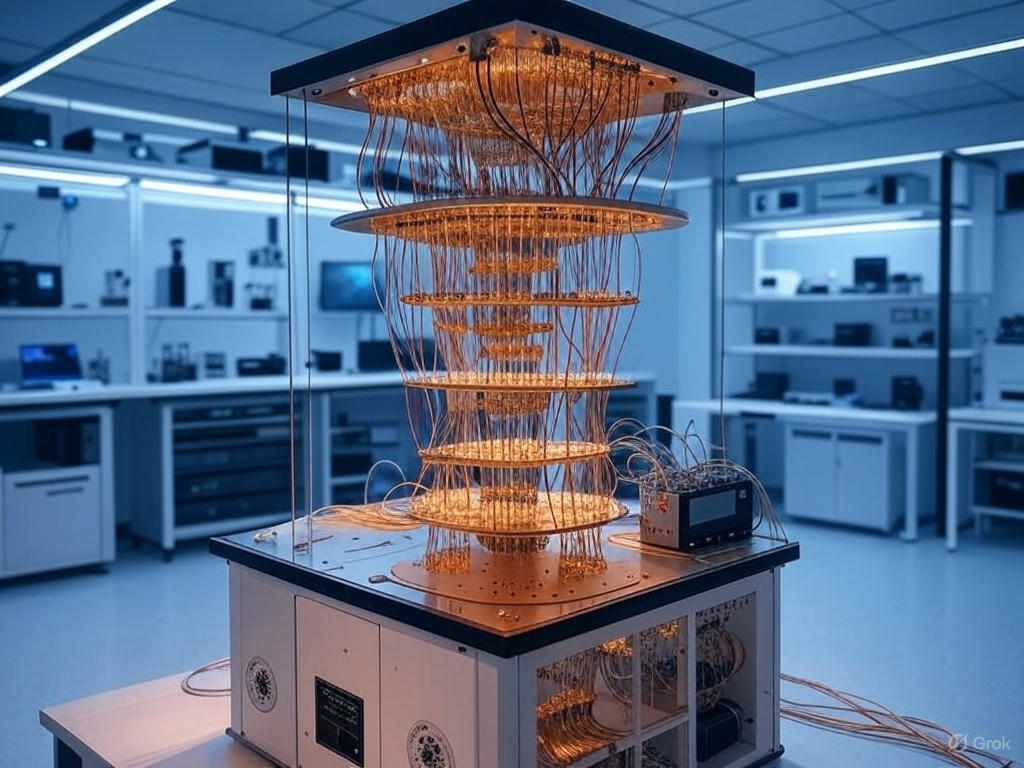ARM processors are a family of computer chips that use the ARM architecture. They’re famous for their power efficiency and remarkable performance per watt in compact form factors. They power the majority of the world’s smartphones, tablets and an increasing share of laptops and servers. The belief in healthcare tech is that arm processors will save the day. They make it possible to reduce power consumption and heat generation in medical devices. These chips allow their devices to last longer on a single charge and enable Harris’ teams to create smart, mobile tools that improve patient care.
As a result, today’s hospitals are increasingly choosing devices that use arm processors to ensure high system uptime and seamless software upgrades. In the following pages, we will illustrate how ARM processors are well suited for clinical work. They protect patient data while making it safer and easier to use to improve care and control costs.
Key Takeaways
- ARM processors are known for their energy-efficient performance, which is largely due to their Reduced Instruction Set Computing (RISC) architecture. This architecture achieves extraordinary power efficiency and hardware simplicity relative to conventional architectures such as x86.
- The modular and scalable nature of this architecture renders ARM highly adaptable. It drives the full gamut of technology from embedded Internet of Things (IoT) sensors to the highest-performance servers and supercomputers.
- ARM’s unique licensing model promotes innovation among manufacturers worldwide, resulting in a diverse ecosystem of customized products tailored to specific application needs.
- ARM processors include inherent security features that are particularly relevant for today’s connected devices. Further, these technologies supplement U.S. efforts to solve global problems with data protection and privacy, both in consumer and industrial settings.
- ARM technology has grown significantly into blossoming areas, such as artificial intelligence, machine learning, and cloud computing. This remarkable growth is a testament to its versatility and power, ready to lead the next wave of technological revolution!
- Educational institutions that are contemplating a move to ARM should carefully strategize around software migration and compatibility. They can look forward to long-term paybacks such as greater energy efficiency, lower costs and better performance for many computing tasks.
What Defines Processor Architectures?
Processor architectures, such as ARM CPU architecture, govern how well devices operate, interact with complex software ecosystems, and consume power. At the very least, a processor’s architecture is connected to its instruction set, which includes a limited repertoire of commands it can execute—imagine add, move, or load.
These fundamental operations are collectively referred to as the instruction set architecture, or ISA. They define exactly what the chip can do, and thus which programs can be run on it. Performance and compatibility both harken back to this defined set, especially in the context of modern ARM processors.
The specification includes detail on bit-widths including 32bit and 64bit. It dictates clock speed, the layout of memory, and how the chip interacts with memory via the addressing modes. With each successive design, new features are added to the architecture, such as improved memory paths and 64-bit storage, reflecting advancements in ARM CPU capabilities.
Today, ARM chips are at the center of a large and growing ecosystem from phones to servers. Tons of copies produced for various tasks!
ARM: The Efficient RISC Design
ARM architecture is based on a RISC (Reduced Instruction Set Computing) model. This allows it to remain with a very limited instruction set of simple operations. The idea is to try and minimize overhead and make everything easy to use and operate.
Similarly, ARM chips draw significantly less power and thus generate much less heat. It’s no wonder you see them in mobile phones and wearables! Their elegant design gives chip designers the freedom to create chips with fewer components.
Thus the chips stay physically smaller and cheaper to manufacture. ARM’s hundreds of variants allow designers to choose the most suitable—from the smallest, lowest-power sensor to a massive server.
x86: The Powerful CISC Legacy
X86 implements CISC (Complex Instruction Set Computing). These chips are able to process many sophisticated instructions with simpler code. This allows them to effectively run legacy code and modern code, which is critical for desktop and laptop machines.
Intel and AMD x86 chips have dominated the world of personal computing for the last three decades, delivering consumers powerful performance and broad software compatibility.
ARM’s Fundamental Advantages
Unmatched Power Efficiency
Because ARM chips are based on a RISC architecture, every instruction is efficient—less superfluous processing, less heat, and more battery life. This is a huge advantage for phones, tablets and wearables. A fitness tracker or a smart home sensor requires weeks of battery life.
ARM plays a crucial role in making that possible. In mobile health, these devices must be continuously live, and thus cool to the touch. ARM’s power-saving advantage eliminates downtime and boosts quality of care.
Impressive Scalability and Flexibility
ARM’s design flexibility allows it to be used in just about any role. Whether it’s a small IoT sensor or a large cloud server, the same fundamental architecture can be employed, simply scaled up or down. This flexibility allows companies to produce highly specialized chips for any application.
A medical CT scanner and a hyperscale data center could both be powered by ARM chips, just scaled appropriately.
Unique Licensing Fuels Innovation
What’s unique about ARM is how they license their designs rather than sell chips, allowing companies to customize ARM processors to their specific needs. This open model ignites massive innovation—dream bespoke chips for everything from medical devices to smart city networks, showcasing the versatility of ARM CPU architecture.
Built-In Modern Security
Security literally can’t be something that’s added on later. ARM chips support secure boot, trusted execution environments, and encryption. This is important for health records, payment systems, and wherever else data needs to be protected.
Hardware-Software Co-Design Synergy
Hardware and software closely collaborate on ARM processor systems, leading to more fluid and quicker applications. In the healthcare space, this is particularly important, as real-time processing speed is critical for effective performance.
ARM’s Expanding Technological Frontiers
1. Conquering High-Performance Computing
ARM has staged an impressive incursion into the territory of supercomputing. ARM chips powered the Fugaku supercomputer in Japan, which recently claimed the fastest supercomputer title. It ingests data for public health research and epidemiology, and for studying weather patterns.
The real win for ARM in these systems is the way it brings power savings while scaling performance up. ARM’s architecture allows hundreds of cores to operate simultaneously, consuming significantly less power than legacy chips. As a result, research laboratories and international scientific communities are able to perform more activities at a reduced cost.
2. Revolutionizing Data Centers, Servers
Data centers today use ARM to save billions on their energy bills and put more servers in a smaller footprint. In fact, companies like Amazon Web Services rely on ARM chips to power their cloud servers.
These replacement chips support a much greater number of users, operate at much higher speeds, yet require much less power consumption. ARM chips improve security. It plays a key role in improving security by enabling robust, cutting-edge safety features.

ARM vs. x86: Performance Showdown
In the decision between ARM and x86 processors, many professionals in the IT and healthcare space are looking for concrete information. Each architecture has its own advantages, created to serve distinct requirements. The table below highlights how each type fares on some important performance indicators.
|
Metric |
ARM Processors |
x86 Processors |
|---|---|---|
|
Performance (Math/Data) |
15–20% better |
Good but lower on average |
|
Memory Operations |
~10% better |
Slightly behind |
|
Power Efficiency |
Higher, longer battery life |
Lower, needs more power |
|
Performance-per-Dollar |
Up to 40% better |
Higher cost per unit |
|
Compatibility |
Some legacy gaps |
Broad, mature ecosystem |
|
Specialized Workloads |
Scales well, mobile/embedded |
HPC, scientific, AVX/SSE |
ARM’s RISC architecture idiom of “less is more” not only makes ARM cores smaller and more power efficient, but benefits performance by reducing complexity. While ARM uses Reduced Instruction Set Computing (RISC), x86 uses Complex Instruction Set Computing (CISC). This has made it more appropriate for heavy-lifting workloads, like scientific computing and other workloads specifically optimized for x86 extensions.
Decoding Benchmark Realities
Benchmarks are important; deployed correctly they provide an objective means to evaluate performance, memory consumption, and energy efficiency. This leads many to turn to tests such as Geekbench, SPEC, and Cinebench to gauge the performance between ARM and x86. Not all benchmarks are created equal. Things such as test environment, compiler options, and hand-tuned assembly code will all affect the results.
Efficiency, Power Consumption Compared
ARM often runs cooler and sips less power. It takes more watts for x86 to run, which results in lower battery life. ARM provides better performance per watt. ARM’s performance-per-watt advantage makes it a natural fit for mobile and edge devices.
In contrast, x86 shines in big, plugged-in setups. In smartphones and ultra-thin laptops, ARM’s battery advantage is crucially important. For large, datacenter-based servers or scientific computation workloads, x86’s power consumption is not as much of a concern.
Speed in Real-World Tasks
In real-world, everyday situations, ARM gets through web browsing, email, and light data tasks more quickly and more coolly. X86 still comes out ahead for applications developed only for its code base, such as legacy desktop applications or specialized high-end design software.
For cloud, ARM’s lower TCO and decent performance often make it the darling of scale-out workloads. In a hospital, ARM’s lower downtime and cost might be attractive, but x86 will still be important for legacy systems.
The Big Switch: Migrating to ARM
The transition from x86 to ARM CPU architecture is one of the most closely followed developments in technology. The influence modern ARM processors have had on firms’ attitudes towards power utilization, costs, and systemic architecture cannot be overstated. More than 6.7 billion ARM chips were shipped just in the fourth quarter of 2020. Their proliferation is certainly difficult to miss! If you thought this radical change could only happen in fantasy, guess again. As the 2020 introduction of ARM processors into Apple’s Mac product line illustrates, ARM is not just for phones!
Why Consider ARM Now?
There’s no doubt that the market is tremendously tilted toward ARM. ARM chips are now shipping over an order of magnitude more than x86 each year. All of this is not simply about the dollars and cents. In comparison, newer ARM chips require a fraction of the power, are cheaper to produce, and are significantly smaller—5nm compared to x86’s 10–14nm.
These changes make ARM better suited for mobile, edge and even some high-end desktop applications. Businesses that begin migrating to ARM today can save money and create more environmentally sustainable IT in the process. They’ll be on the cutting edge as ARM’s technology continues to expand!
Tangible Benefits for Computing
We all benefit from ARM’s power efficiency, offering longer battery life on mobile devices and less heat generation in servers. In healthcare, finance, and logistics, firms are turning to ARM to operate more intelligent, lean, and scalable solutions. It’s all about budget.
The lower cost per chip enables IT leaders to accomplish more with their budgets. ARM’s approach allows companies to customize the design in ways that meet specific needs, rather than simply purchasing standardized, off-the-shelf components.
Navigating Transition Complexities
Migrating to ARM can be difficult, too. Issues with application support—including a lack of full 64-bit emulation on Windows for ARM—can halt a migration in its tracks. This could pose a challenge for companies with a hybrid chip set, particularly in a BYOD context.
To make the transition easier, companies leverage cross-platform tools and pilot workloads before fully migrating. Second, they work with vendors who know ARM’s oddities.
My Take: Is ARM Inevitable?
Given its wide adoption and rapid trajectory, it appears that ARM processors will soon be at the forefront in most areas. Application gaps and chip mix challenges may cause delays in ARM CPU architecture development. How the market addresses these will determine ARM’s long-term place.
ARM Powering Tomorrow’s Innovations
Whether it’s in smart buildings, industrial automation or even marine biology, ARM processors continue to prove their worth in a wide range of environments. Their main strength is in their smallness, low power consumption and security. Interest in ARM-based PCs and tablets is growing exponentially. People are motivated by a desire for speed and lower energy consumption.
Just five years later, by 2025, experts predict ARM will control 40 percent of all global PC and tablet shipments. ARM’s adaptable design allows them to integrate into a wide variety of projects, assisting industries to operate more efficiently and safely.
Smart Buildings, Secure Access
When it comes to smart buildings, ARM chips are everywhere. Their low power consumption and inherent security make them ideal to control connected locks, HVAC systems, and other smart sensors. ARM technology is helping ensure only authorized individuals enter offices and hospitals by using smart access controls to read badges and faces. Hospitals especially need these chips for quick, secure entry and monitoring of patients.
Enhanced Factory Automation
ARM chips power the robots factories deploy, monitor machines, and keep track of goods in factories. ARM supports this by enabling machines to respond in real time, reducing energy waste and costs.
In fact, many of the world’s leading car manufacturers employ ARM-powered robots to perform welding and painting operations, a testament to how ARM is advancing factory floor innovations.
Next-Gen Automotive Intelligence
Today’s vehicles rely on ARM processors for intuitive touch screen dashboards, advanced driver assistance systems, and high-speed connectivity to the cloud. ARM CPU architecture powers lane departure warnings, backup cameras, and increasingly complex AI-based driver assists, all helping drivers enjoy a safer, smoother ride.
Autonomous Robotics Unleashed
At present, robots in healthcare, agriculture, and janitorial work commonly utilize ARM. These chips allow robots to remain small, light, and capable of working longer on a single charge. For instance, hospital robots leverage ARM so they can quickly check data and assist patients safely.
Specialized, Energy-Critical Systems
ARM excels in hardware where energy efficiency is critical, particularly in applications like intelligent medical instruments and climate-change monitors, thanks to their advanced RISC machine architecture that allows devices to run much longer on a single charge.
ARM’s Next Chapter: Innovations Shaping the Future
Reflecting on ARM’s trajectory, it’s obvious the company is at a crossroads. Its history as the designer of the most successful mobile chips now extends to hundreds of industries. From our phones to the cloud servers that power them, ARM is fundamental to the future of how data travels—and expands.
The next decade will test how well ARM stays ahead as it pushes for more flexible and secure chips. This emphasis is critical because increasingly devices, whether smart city sensors or hospital monitors, require a longer lifespan and more secure code.
ARM’s Trajectory in Computing
ARM’s expansion began with tiny devices, but today its processors reside in data centers, connected vehicles, and intelligent homes. Efficiency of programming and rapidity of development are the forces behind its proliferation. Consider the emergence of long-lived IoT devices, which is an excellent illustration of why flexibility is so important. ARM’s innovative designs enable this by allowing devices to operate longer on their existing hardware without requiring costly upgrades.
Its trajectory plan is to make all things computing. This approach indicates an even larger opportunity that extends beyond the smartphone to include equipment in operating rooms, factory floors and households.
Anticipating Next Architectural Shifts
After all, the tech world never stands still. No wonder machine learning has become the new killer app! That’s why today, ARM is designing chips that perform math and data in completely new ways.
Vectoring across graphics and ML designs equals quicker time to AI results. Security quickly becomes the focus as well, with patches coming in to address memory safety vulnerabilities such as buffer overflows. This goes a long way to protect patient data and electronic health records.
The trend is clear: chips will soon be more tuned for each job, such as 5G networks or real-time data work.
How ARM Reshapes Technology
The ripple effect of ARM is indeed remaking the chips that end up in many of our favorite devices. Its easy-to-code style makes for rapid software development.
Today, everyone from device manufacturers to the world’s largest cloud providers have business models built on top of ARM’s architecture. In health care, ARM chips run bedside monitors and wearable sensors, improving the accuracy of medical records.
The company’s commitment to longevity not only saves money, but ensures adherence to stringent health regulations.
Conclusion
In addition to their architectural innovations, ARM chips provide tangible advantages in terms of speed, power consumption, and cost. More organizations are selecting ARM for their forward-thinking concepts. They featured it in everything from tiny flip phones to gigantic health information exchanges! Here’s why ARM matters to you. Big players including Apple and Google leverage ARM to create innovative technologies that run quickly and efficiently. It’s not just tech titans that have an interest in ARM anymore – many disciplines are realizing the value of ARM today. Companies in health care, finance, and science experiment with ARM to meet their respective needs. The wins for clarity continue to stack up in testing and real-world use. For anybody considering disruptive technology, it is hard not to be excited about what ARM brings to the table. To unlock these benefits, find out if ARM is right for you. Engage with conveners and experts that understand ARM.






